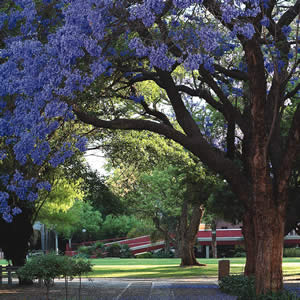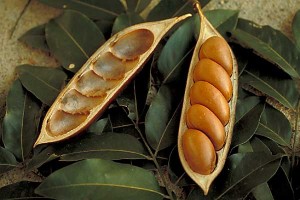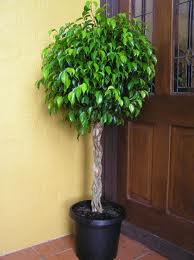Four of the most common street trees in Brisbane.
A brief description of four of the most common street trees in Brisbane. What to look for, what to do, and what not to do!
Jacaranda.

Never plant a Jacaranda under power lines.
Jacarandas, (Jacaranda mimosifolia), are beautiful late spring flowering trees, which create washes of purple through many towns and cities throughout Australia in spring. Jacarandas originally came from Brazil but they grow very well in Brisbane.
Generally it is best never to prune a Jacaranda as it will react by growing long shoots that distort the natural shape or habit of the tree.
Always choose carefully when planting a jacaranda and avoid planting under neath power lines or next to a house as they can grow quite large!
Jacarandas do not like frost and grow best in a warmer climate. If you have to prune a Jacaranda always seek the advice from a professional tree pruning service in Brisbane
Schizolobium parahybum (Tower Tree)

Schizolobium has no common name.
Schizolobium parabybums common name is Tower Tree, however in Brisbane it is refered to as the yellow Jacaranda.
It has green, ferny foliage and in spring it displays a profusion of yellow, pea-shaped flowers in spikes 30cm long. This fast-growing tree originates from Brazil and Mexico and grows to about 40m (130′) tall. It very much looks like a cross between a yellow flowering Jacaranda and a Tree fern, as it has ferny leaves and an umbrella shape to the crown.
The tree looses its leaves just before flowering in spring time.
The leaves are said to be the largest compound leaves in the world!
The tree prefers warmer tropical climates north of Brisbane, but will do really well around Brisbane.
Black Bean Tree

The seeds are large and the pods are huge!
The Black bean tree (Castanospermum australe) is also known as a moreton Bay chestnut tree. Is is indigenous to Australia and can grow up to 30m tall. It is usually smaller when grown around Brisbane as its climate dictates the growth habit.
The flowers are two tone orangey red and yellow. The flowers attract native birds such as rainbow lorikeets who are attracted to its sweet nectar.
The foliage is glossy green and very dense. The tree also produces giant seed pods with golf ball sized seeds.
The tree occurs naturally along the riversides of northern N.S.W. right through to Port Douglas in far north Queensland.
Weeping Fig

Ficus benjamina is best placed in a pot.
The weeping fig (Ficus benjamina) is an excellent large pot plant for brightly lit areas indoors, on a balcony or in a sheltered courtyard. It also i sa highly valued park tree and can also lay claim to being some of the largests and oldest trees throughout Brisbane.
When this tree is planted in the garden it will develop into a very large tree 25m or more tall and easily span up to 30m. It also has a wide andinvasive root system that can damage water pipes and structures!
All fig trees are sensitive to being moved or relocated and will drop all of its leaves after being moved, only to re-sprout new ones after a period of time.
The leaves have a distinctive drip tip which is indicative of rainforest species.
These trees will also take root out of a pot plant if left on a soil surface, so it is always recommended to place a dish underneath the pot plant to avoid this taking place!
Always consult a professional Arborist in Brisbane or a Tree Removal expert in Brisbane for advice or tree care!









